
Article contents

There’s 3 simple steps to investing in the FTSE 100. First, find a great investment platform (recommendations below), and then find the right type of investment (ETF) for you, and finally, buy it. As simple as that. We’ll run through it in more detail below.
Looking to invest in the FTSE 100? We’ve got you covered. Here’s everything you need to know, and 3 easy steps to follow, to start building your investment portfolio – including buying the FTSE 100. It’s probably much easier than you might be thinking.
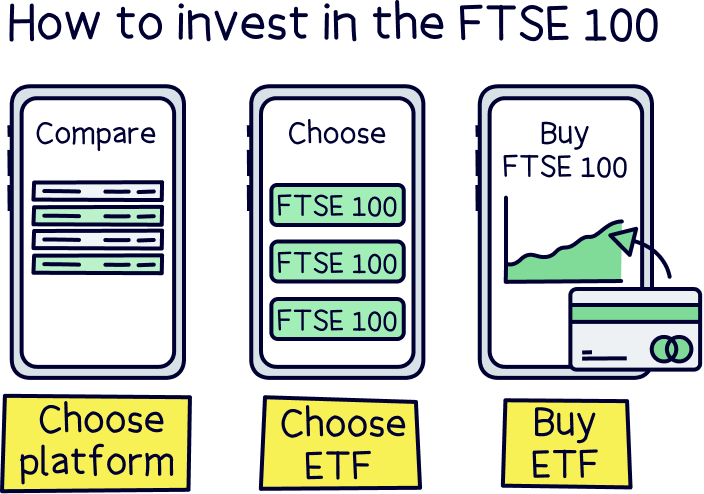
And by the way, great decision to invest in the FTSE 100 – it’s typically seen as one of the most sensible investments you can make for long term investing. We’ll cover why in more detail later, as there’s quite a bit to it.
Anyway, first things first, let’s quickly just make sure we’re on the same page when it comes to what the FTSE 100 is.
The FTSE 100 is simply, the largest 100 companies in the UK, as listed on the London Stock Exchange (LSE), the major stock exchange for the UK (a place to buy and sell shares).
It’s technically called an index, or share index – which is a measure of a group of companies on the stock market. In this case, the FTSE 100 index measures the market value of the largest 100 companies on the London Stock Exchange.
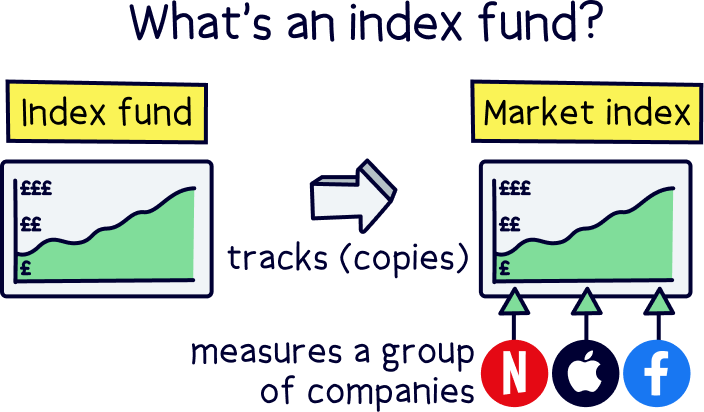
The market value is determined by the share price and the number of shares that exist. There’s a tiny bit more technical bits to work out their position in the FTSE 100, but ultimately, it’s how big the company is (called its market capitalisation, or ‘market cap’).
Anyway, the FTSE 100 is typically used as a measure of the UK economy. Although these days it’s not too much of a reliable indicator as it is heavily influenced by the exchange rate of the Pound (GBP) – as lots of the largest companies trade internationally.
Note: the FTSE is put together by the Financial Times Stock Exchange, which is how we get ‘FTSE’ (said out loud its ‘footsie’). Which itself is owned by the London Stock Exchange Group.
We hope that wasn’t too confusing? Don't worry if it didn't all make sense, we were geeking out a bit. Let’s get on to how to invest.
The current value of the FTSE 100 index is:
To invest in the FTSE 100, you might think you’ll have to invest in all the companies within the index, so all 100 top companies in the UK. That sounds like it might take quite a while and cost quite a lot right?
Actually, it’s super easy. Instead of buying all the shares individually, you can instead buy a share of an investment fund, which is a collection of lots of different investments (like shares).
Lots of these investment funds can be bought and sold easily on a stock exchange, just like individual shares – and these funds are called exchange-traded funds, or ETFs.
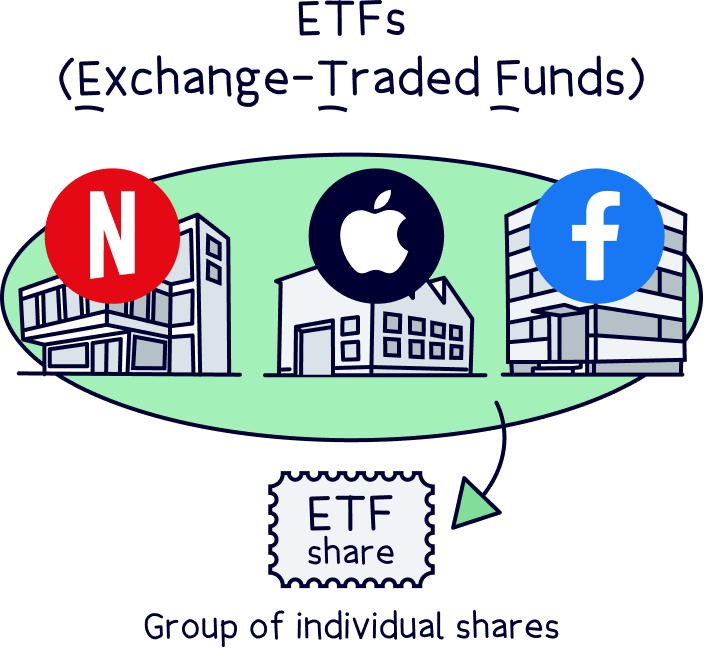
So, all you need to do is buy a share of an ETF that tracks the FTSE 100 index. Simple right? We’ll guide you through it all, don’t worry. And show you how to buy and invest for the lowest cost possible.
First, we’ll need to find the right ETF trading platform to buy ETFs, and then after that, find the right ETF, and then simply buy it. 3 easy steps. Let’s get to it.
With new technology, buying ETFs is super easy and most stock brokers have a fairly good range. (A stock broker is a company that buys and sells investments on your behalf – you need to use one to buy investments.)
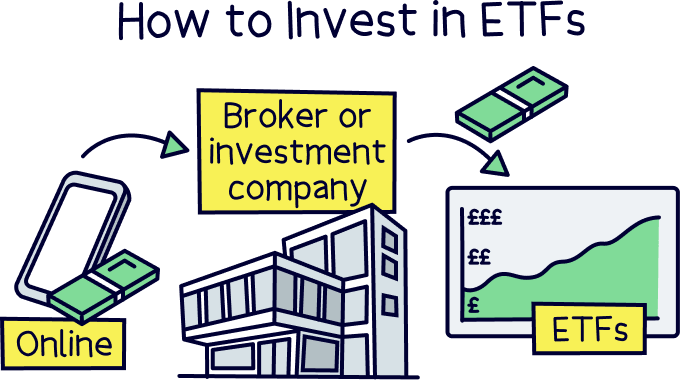
With most stock brokers, you’ll pay a share dealing fee (a fee to buy investments) when you buy an investment, and an ongoing fee to hold the investments too, like a management fee, or custody fee. However, with the best ETF platforms, there’s none of these fees. You can invest virtually fee-free!
Below are the best investment platforms to buy ETFs – they’re all free to use, hold investments, and are commission-free to buy investments. They also have amazing reviews from customers.
Lightyear is an awesome investing app, very low cost and you can invest tax-free within an ISA.
Get up to £100 free share



Lightyear is an awesome mobile app with very low cost investing.
There’s a decent range of investment options (over 4,000 stocks and ETFs), you can store multiple currencies, and the app itself is modern and super slick.
ETFs are commission-free, and stocks are max. £1/$1/€1 per order. There's also very low currency conversion fees of 0.35%, or you can hold the currency itself and avoid this fee.
You can invest with a tax-free ISA, a regular account and a business account.
And if you’ve got cash savings, you’ll also get one of the best rates possible with their Cash ISA (it matches the Bank of England base rate).




eToro is one of the best investment platforms out there - and is by far the most popular, with over 30 million customers.
Why? eToro is very low cost (commission-free stocks), easy to use, and has lots of awesome trading features. There's also a community of other traders to learn from and even copy.
It’s also got the largest range of assets to trade and invest in – including stocks, ETFs, crypto, CFDs, currencies and commodities (such as gold).

Up to £100 welcome bonus. Promo code NUTS.



InvestEngine is great for investing in exchange-traded funds (ETFs). That’s all they do – and they're very good at it.
It's so low cost, there's in fact no InvestEngine fees at all (to make your own investments).
And for the experts to manage your investments, it's only 0.25% per year.
There's a great range of ETFs (over 700), and the app is pretty great too.

Lightyear is an awesome investing app, very low cost and you can invest tax-free within an ISA.
If you’d prefer to buy investments with a traditional stock broker, where you can also buy over the phone, here’s the best one in the UK.
Lightyear is an awesome investing app, very low cost and you can invest tax-free within an ISA.



AJ Bell is well established, with a good reputation.
It's one of the cheapest traditional stock brokers out there (charging a low annual fee).
There's a huge range of investment options – pretty much every investment out there (including both funds and shares).
The customer service is great too.
Overall, it's one of the best options.

When investing in the UK, you’ve got different investment account types to choose from, a General Investment Account (GIA), Stocks & Shares ISA, and a personal pension.
We’ll cover them all in more detail a bit further down, but as a quick run through:
If you’re unsure which one to use just yet, open a General Investment Account to start with (all investment platforms have these). You can open the other types later on if you want to (highly recommended and we’ll cover best practice strategies for these accounts later).
Right, so we’re all now set up with our investment platform or stock broker to buy investments. Next up is to find the right ETF to buy.
You’ll see there’s 100s of ETFs on the investing platform and some can have fairly confusing names – all meaning lots of different things.
We want to look for ‘FTSE 100’, and there will be a search box you can use. You’ll then see several FTSE 100 ETFs listed. Still confusing right? There’s different types of effectively the same ETF. Let’s run through them.
So, often there’s two types of the same ETF from the same provider, either ‘accumulating’ (Acc) or ‘distributing’ (DIst).
Accumulation is where the dividends that your investment receives (which is the profits the companies pay out to their shareholders), is retained within the investment itself, and reinvested to buy more shares of the FTSE 100. So, you’ll benefit from compound interest over time (where your profit makes you more and more money over time).
With distributing ETFs, the income from the dividends is paid directly to you instead of being reinvested. So, you’ll get cash appear within your cash account with the investment platform, and it’s all yours to do with what you want. The investment itself will grow slower than accumulating ETFs as you aren’t benefiting from compound interest as much.
The choice is completely yours, and you’ll see Acc or Dist next to the ETF on the investment platform to show you which is which.
You’ll likely also see there’s lots of FTSE 100 ETFs, but all from different providers. The top ETF providers across the world are:
The ETF provider holds all the investments and will carry out the day-to-day management of the fund, and buy and sell investments within the ETF when needed. For instance, if a company falls out of the FTSE 100 index, the fund manager (the provider) will need to adjust the shares within the ETF (to buy the new company that has entered the top 100 and sell the old company that has dropped out).
They can charge different fees, and with an ETF, this is called the Total Expense Ratio (TER). This is what you’ll pay to hold the investment, and this will be deducted from the fund itself by the provider (it’s a percentage of the total investments each year).
Luckily, with index funds, such as FTSE 100 ETFs, they’re very low cost. With the iShares FTSE 100 ETF, the cost (TER) is 0.07%, and that’s the same with HSBC. The Vanguard FTSE 100 is 0.09% as is the Invesco option.
So, effectively, it doesn’t matter which ETF provider you choose, the investments are the same, and the fees vary only slightly. If you don’t have a preference, the iShares ETF is super popular.
Found the investment platform you’d like to use, and the ETF fund itself? All that’s left to do is deposit money and buy it – you’re now an investor in the FTSE 100, congratulations!
Holding the FTSE 100 as an investment is often seen as a very sensible long-term strategy. You’ll benefit from the UK economy growing over time, all in one single investment.
Nuts About Money tip: you might want to consider a larger investment portfolio as you begin to invest more. And now you know all about ETFs – you can discover more that suit your investment style and goals (for instance, perhaps socially responsible investment funds (e.g. no fossil fuels). The choice is yours!
We’ll give you a bit more information on ETFs below if you’re keen to learn more.
ETFs are a great way to invest in general, and they’re very popular. They offer the ability to build a well diversified portfolio (a wide range of investments) all suited to different types of investment strategies, so you can build your own investment portfolio very easily, and for very low cost.
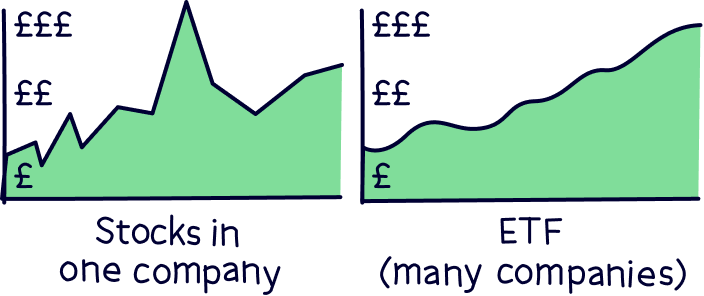
Well, you can cheat a bit, and let the experts handle everything by buying the right mix of investments for you, by simply buying a share of an investment fund.
ETFs are a type of investment fund, similar to a ‘mutual fund’, which is simply a collection of lots of different investments pooled into a single investment, and looked after by a fund manager (we’ll cover the investment types below).
With an ETF, they’re easily bought and sold on a stock exchange (the stock market), which makes them exchange-traded funds. Mutual funds are also very popular, but aren’t traded on stock exchanges, you need to buy them directly through a stock broker.
Stock and shares are where you own part of the company, you own ‘share’ of the company. All the shares combined (called the shares outstanding) represent the value of the company, which is called its market capitalisation, and this is a measure used to determine the FTSE 100 (100 largest companies on the UK stock market).
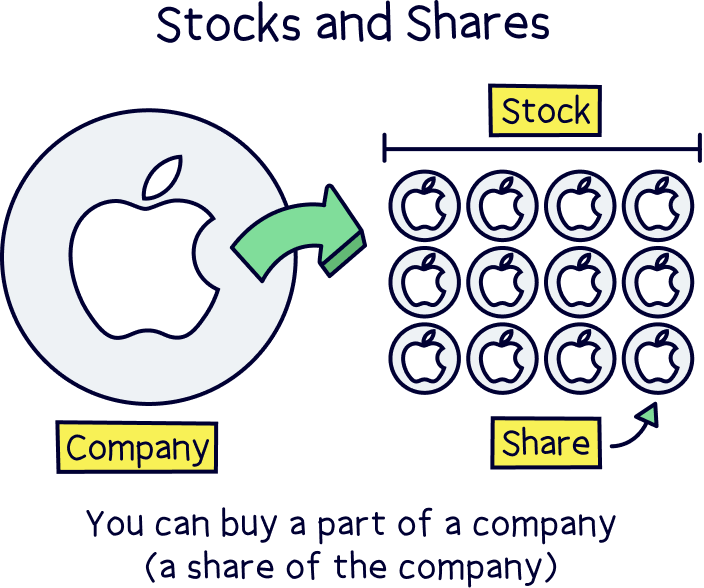
They’re traded on stock exchanges across the world, for instance the London Stock Exchange (LSE) in the UK, and the New York Stock Exchange (NYSE) in the US.
The value of the shares can go up and down depending on how the business performs, or the stock market in general.
If you’re keen to trade individual stocks and shares, check out the best UK share dealing accounts.
Bonds are where you effectively lend your money to governments and large corporations in return for interest. They’re typically seen as safer than shares, but tend not to grow as much over the long term.
There’s also commercial property, such as offices and shops. These provide a rental income.
There’s two main types of investment funds: passive funds and actively managed funds.
A passive fund, also called an index fund, or tracker fund, is where the fund simply tracks a stock market index, for instance the FTSE 100, the FTSE 250 (250 largest companies), or the S&P 500 (top 500 companies in the US). There’s lots of indexes out there (also called stock indices).
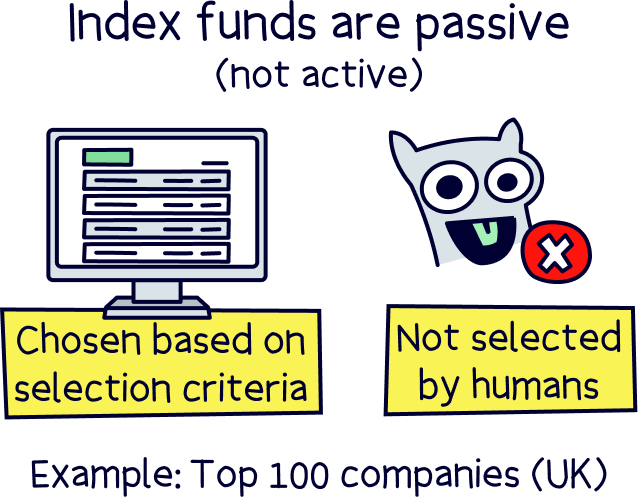
These are typically cheaper (lower fees), as there’s less involvement from the experts (fund manager). The fund manager typically adjusts the investments to match the index, rather than looking for opportunities for growth.
With an actively managed fund, the experts do a lot more work, and they’ll be building a fund to achieve certain goals (such as long term growth or provide a regular income). They’ll then manage the funds and make changes when necessary to keep the fund on track for the goal.
These are typically more expensive with higher fees, as there’s more involvement from the fund managers.
If you’re keen to invest in these, InvestEngine¹ has a great range, and is fee-free!
We touched on the different types of investment accounts in the UK, but let’s run through them a bit more in-depth, and they’re key to building wealth over the long term.
A General Investment Account is the standard investment account that every investment platform offers. It’s no-frills, but you can have as many as you like.
You’ll have to pay tax if you make a profit within a tax year (April 6th to April 5th the following year).
The tax you might have to pay is Capital Gains Tax, Income Tax and Dividend Tax.
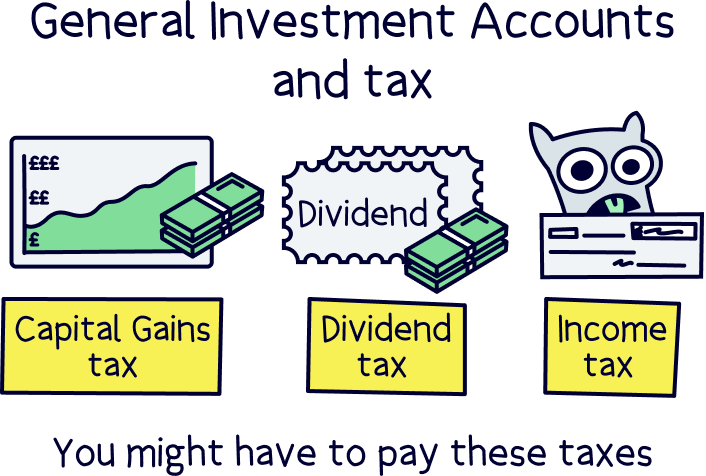
Capital Gains Tax is the most common and you’ll have to pay it on your profits on anything over £3,000, if you sell investments. The amount you’ll pay is 10% if you’re a basic rate taxpayer earning less than £50,270 per year, or 20% if you’re a higher rate taxpayer, earning more than £50,270 per year.
With a Stocks and Shares ISA, everything you make is tax-free, forever!
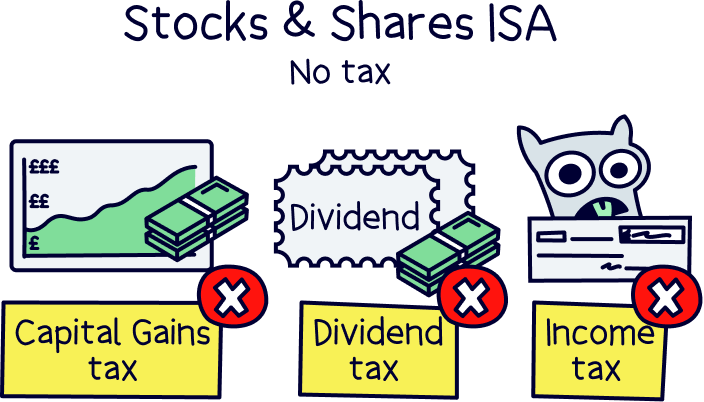
They’re pretty great and allow you to save as much as £20,000 per tax year, called your ISA allowance. However, you can only pay into one Stocks and Shares ISA per tax year.
A great strategy is to use your Stocks and Shares ISA with an expert-managed investment platform. That's where experts look after your investment and grow them over time, using safe and sensible investment strategies. You can then open a GIA to make your own investments alongside if you want to.
If that sounds interesting to you, check out Beach¹, they offer a tax-free Stocks & Shares ISA managed by a team of experts and you can even set up a pension pot too.
A personal pension is a great way to save for retirement. This is a pension that’s in your name, and you decide how much you’d like to pay into it, and when to withdraw from it (as long as you're over 55 (57 from 2028)).
You’ll get a massive 25% bonus on everything you pay in, automatically added from the government. Plus, if you’re a higher rate taxpayer (40%) or additional rate taxpayer (45%), you can claim some tax back at these rates too.
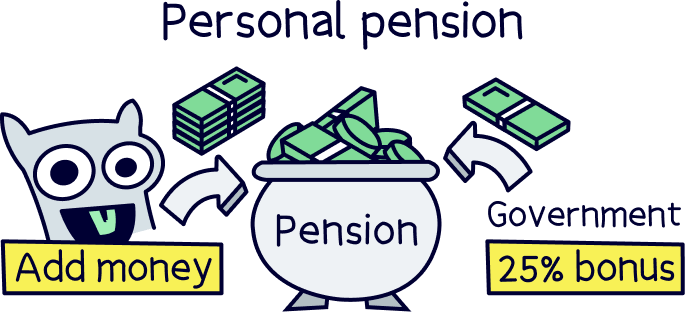
If you want to make your own investments, such as investing in the FTSE 100, you can open a self-invested personal pension. Alternatively, or as well as, you could let the experts handle things and grow your money over time, into a nice big pension pot for retirement.
For this, our recommendation is PensionBee¹ – they’ve got a great investment record, have low fees, and easy to use. Here’s our PensionBee review to learn more.
You could also check out the best pension providers for both expert-managed options and SIPPs.
Nuts About Money tip: if you’re looking to trade regularly (day trading), it can be better to use another type of investment called a CFD (Contract For Differences). Trading CFDs is trading the price of the asset, rather than buying the asset directly. We won’t go into them now, but they’re typically cheaper and have benefits for advanced traders. Learn more about trading CFDs with our guide to the best CFD brokers.
Yep, it’s perfectly safe to invest in ETFs that track the FTSE 100.
Both the investment platform, and the investment provider will be authorised by the Financial Conduct Authority (FCA). They’re the people who make sure your money is being well looked after, and the company is acting in the right way. They’ll have been reviewed and continually monitored.
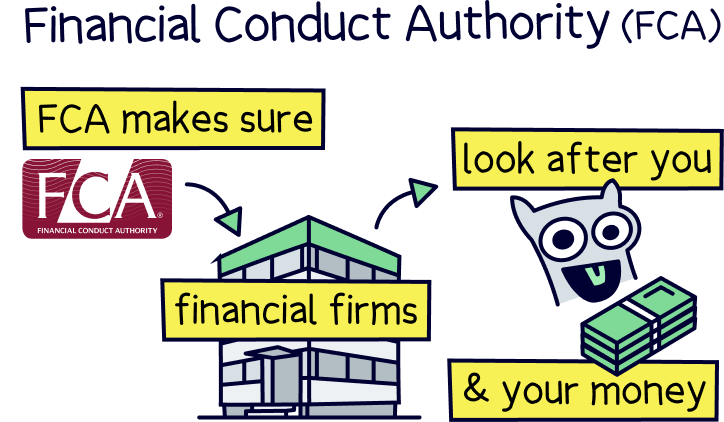
This also means you are protected by the Financial Services Compensation Scheme (FSCS). This is where you’ll get up to £85,000 compensation if something happens to the investment platform or provider. Although this is very unlikely. This applies to ‘retail’ investor accounts (like us), rather than professional traders.
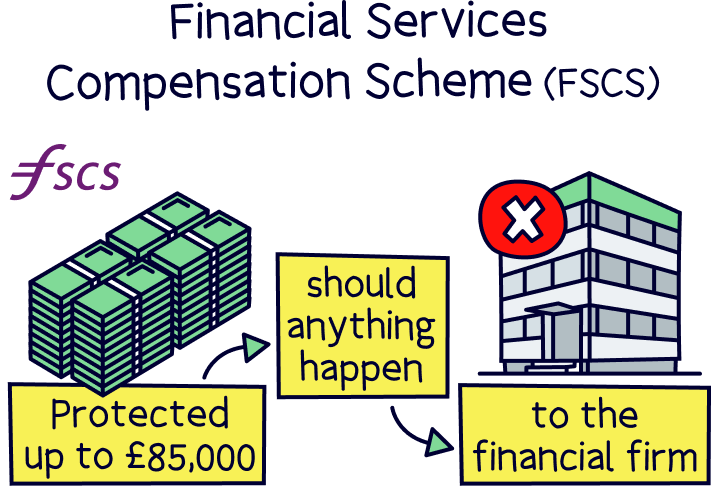
Plus, your investments are held with the provider itself, all of which are some of the largest firms or banks in the world, for instance HSBC.
You can check if a company is authorised by the FCA by checking the FCA register.
That’s all there is to investing in the FTSE 100. 3 easy steps. We hope that’s made things a lot clearer for you, and you’re keen to get investing!
Investing with the right investment strategy can be a real game changer for your financial future, and investing in the FTSE 100 can play a big part in that.
The FTSE 100 is often a good investment to track the UK economy, and can be a core part of great investment portfolios. You could also consider the FTSE 250 (top 250 companies), which offers access to invest in a wider range of UK businesses.
To recap, here’s how to invest in the FTSE 100 in 3 steps are:
You’ll be an investor in the FTSE 100 in no time. If you want a reminder who to use, scroll up, or click recommended investment platforms. They’re all very low cost, and have a great range of ETFs in general.
And that’s it. Thanks for reading, and all the best on your investment journey!
Lightyear is an awesome investing app, very low cost and you can invest tax-free within an ISA.
We’d love to hear from you, and it will help others too.
Lightyear is an awesome investing app, very low cost and you can invest tax-free within an ISA.